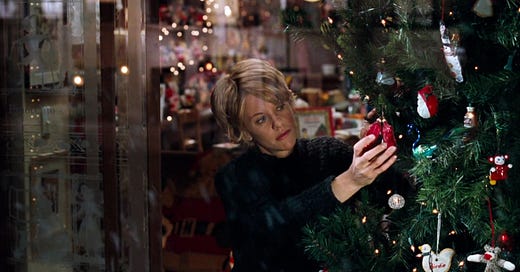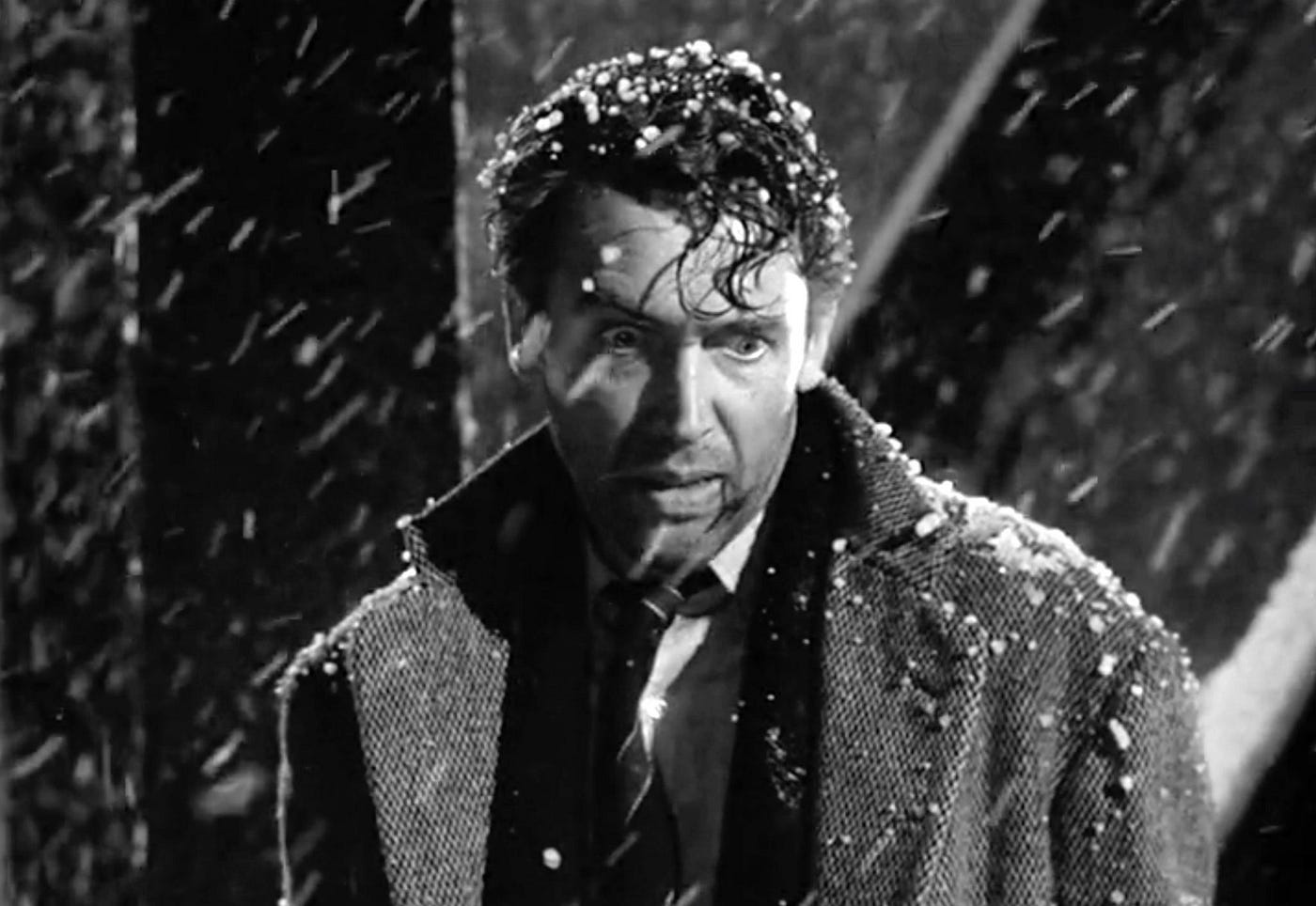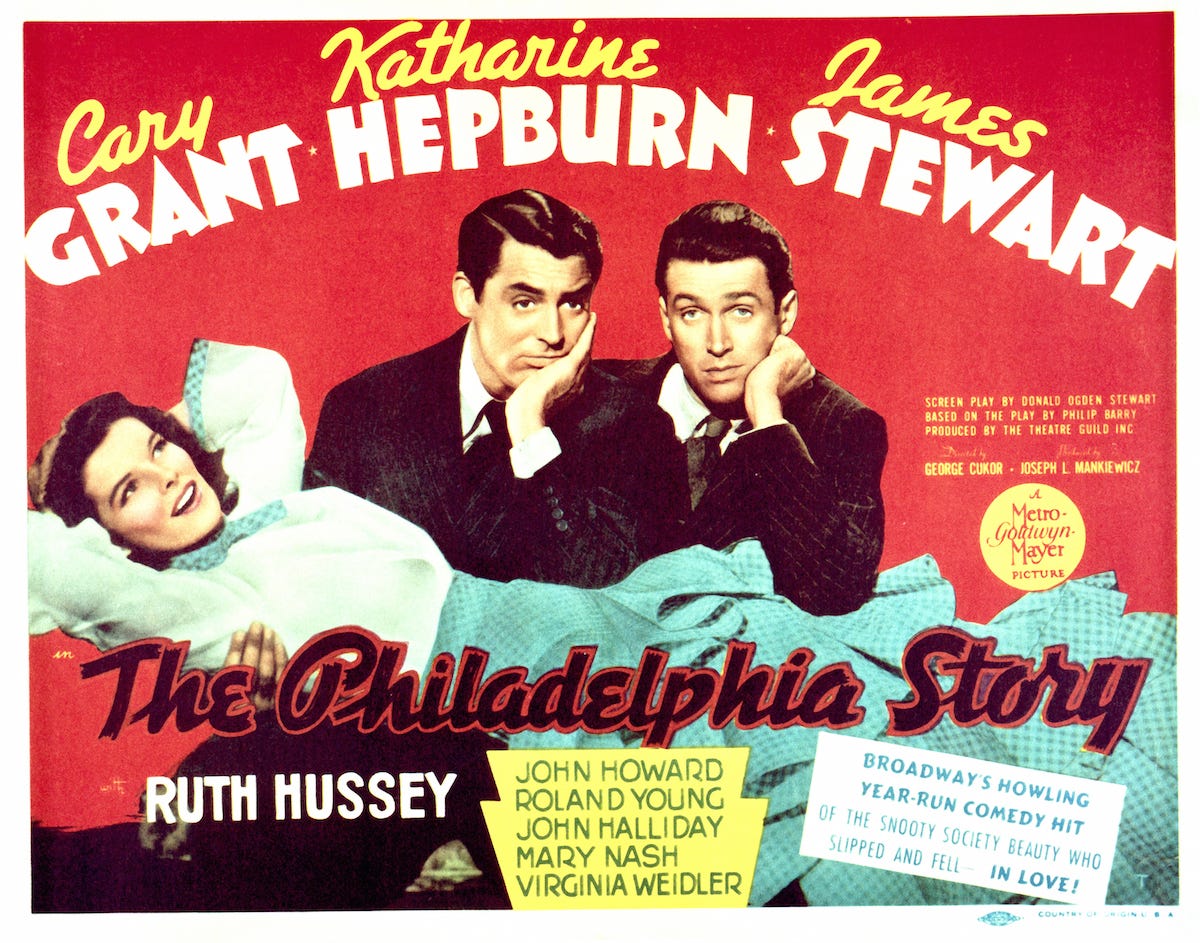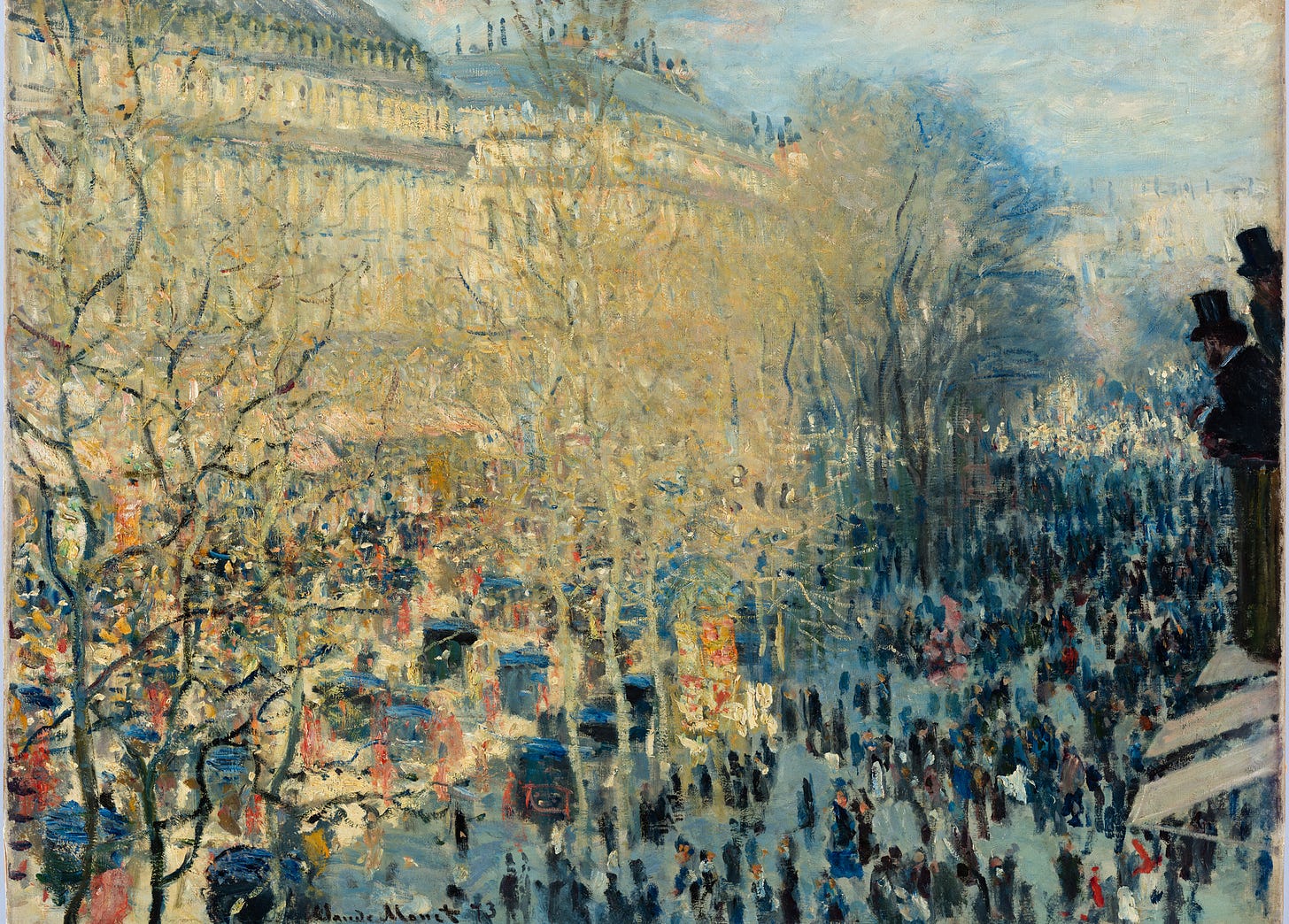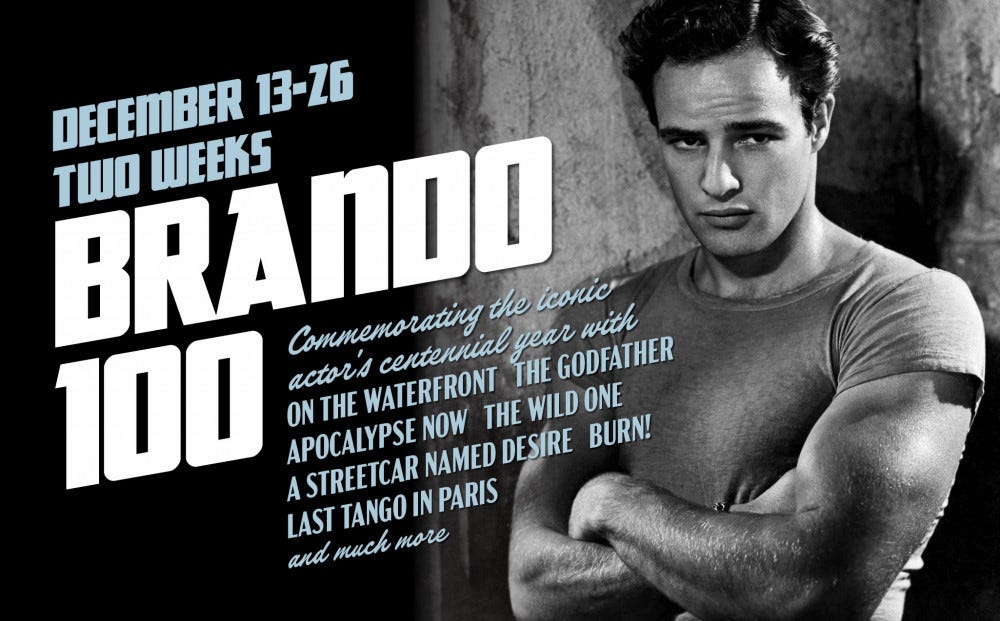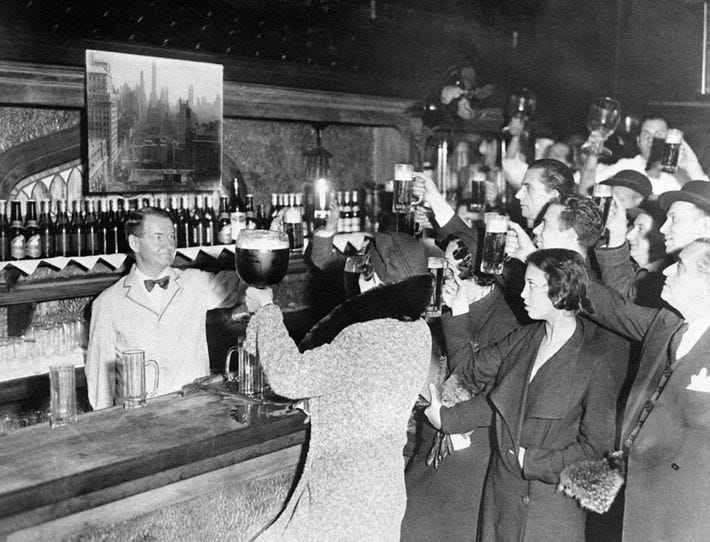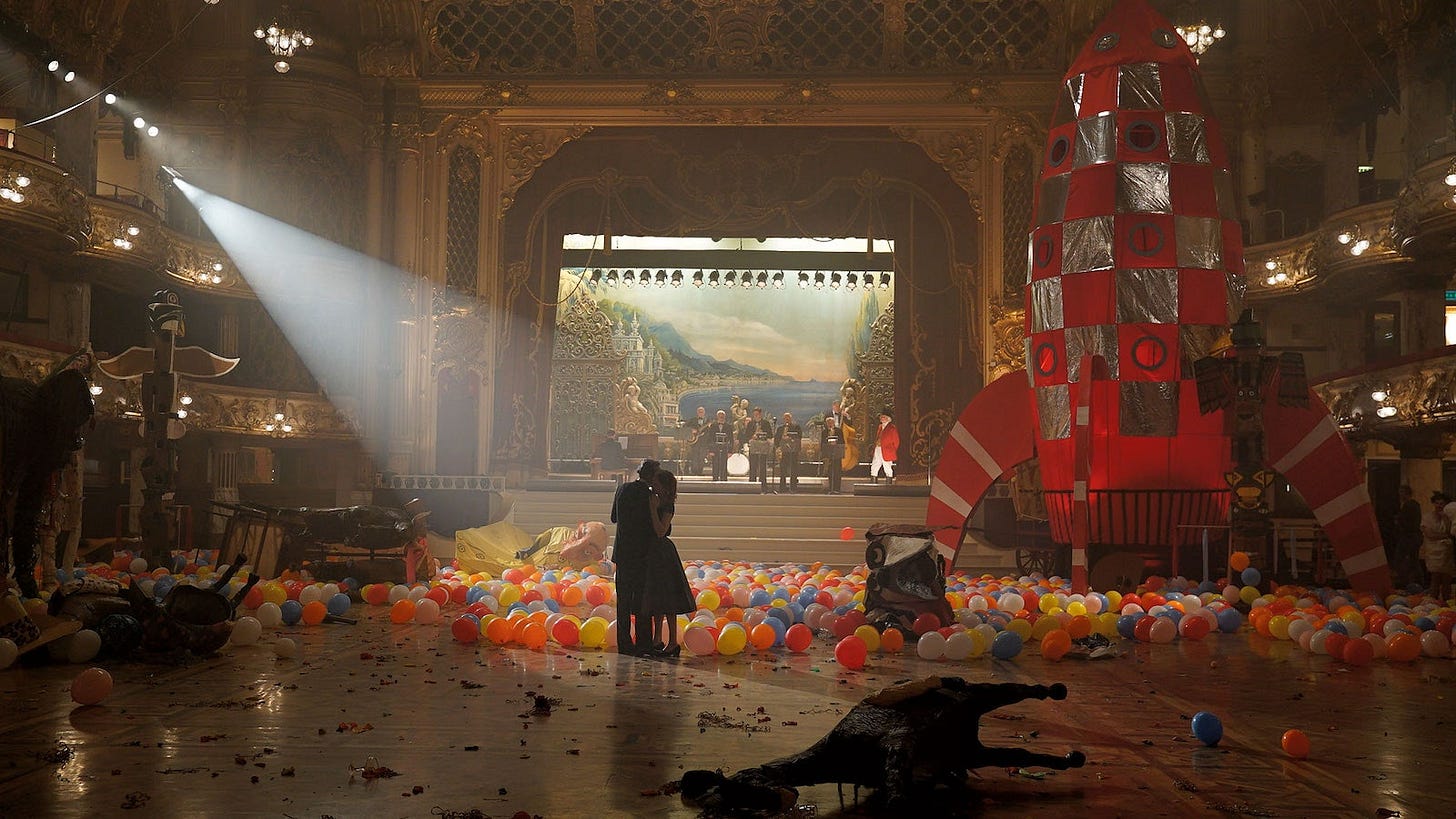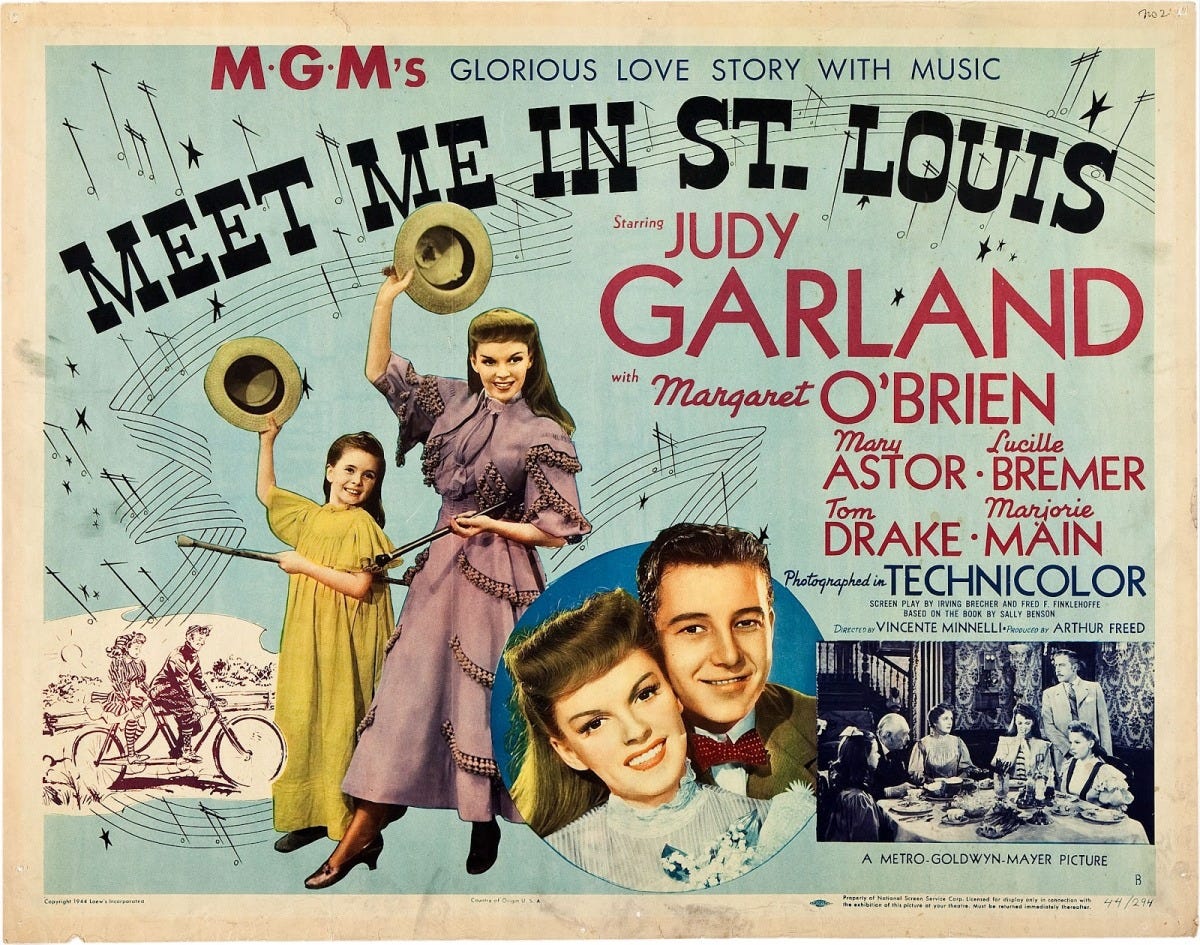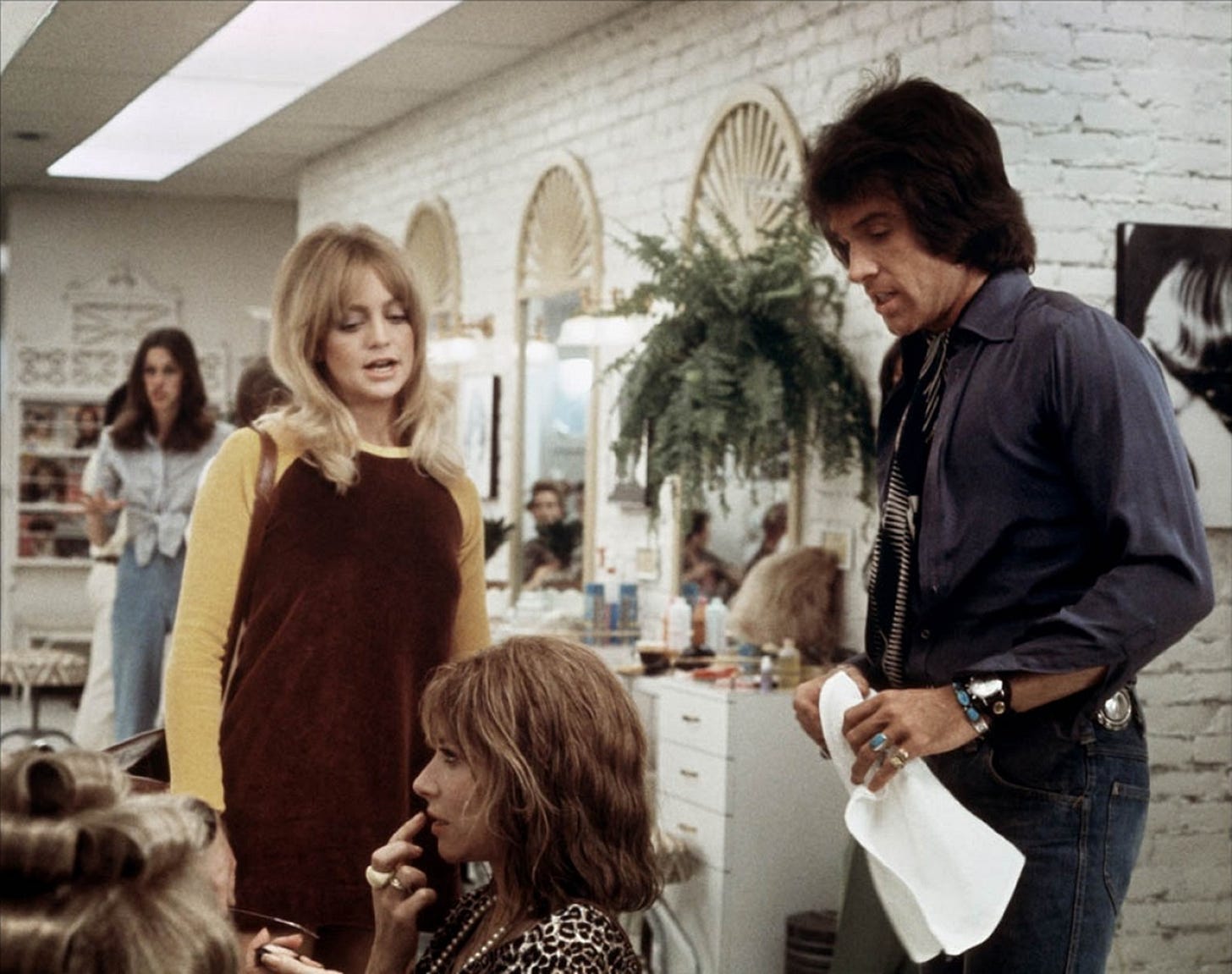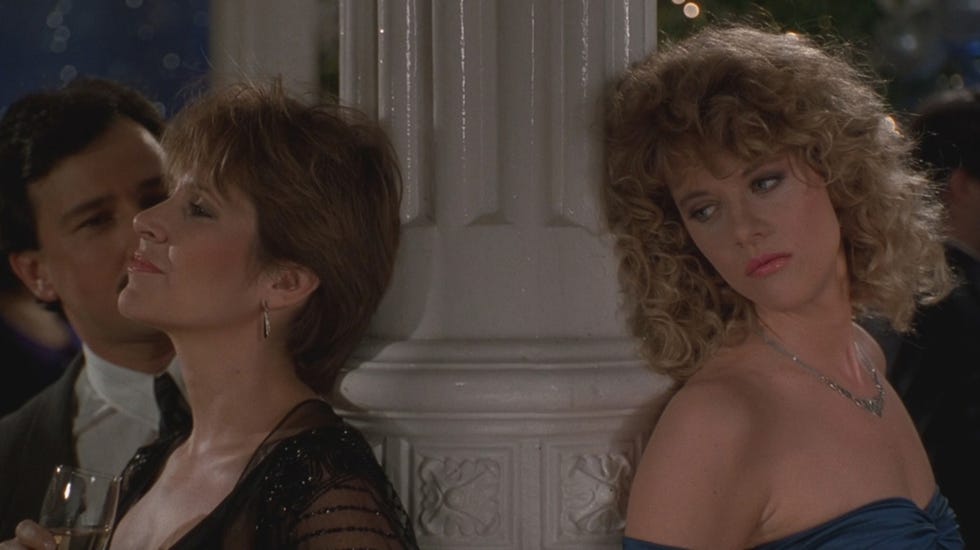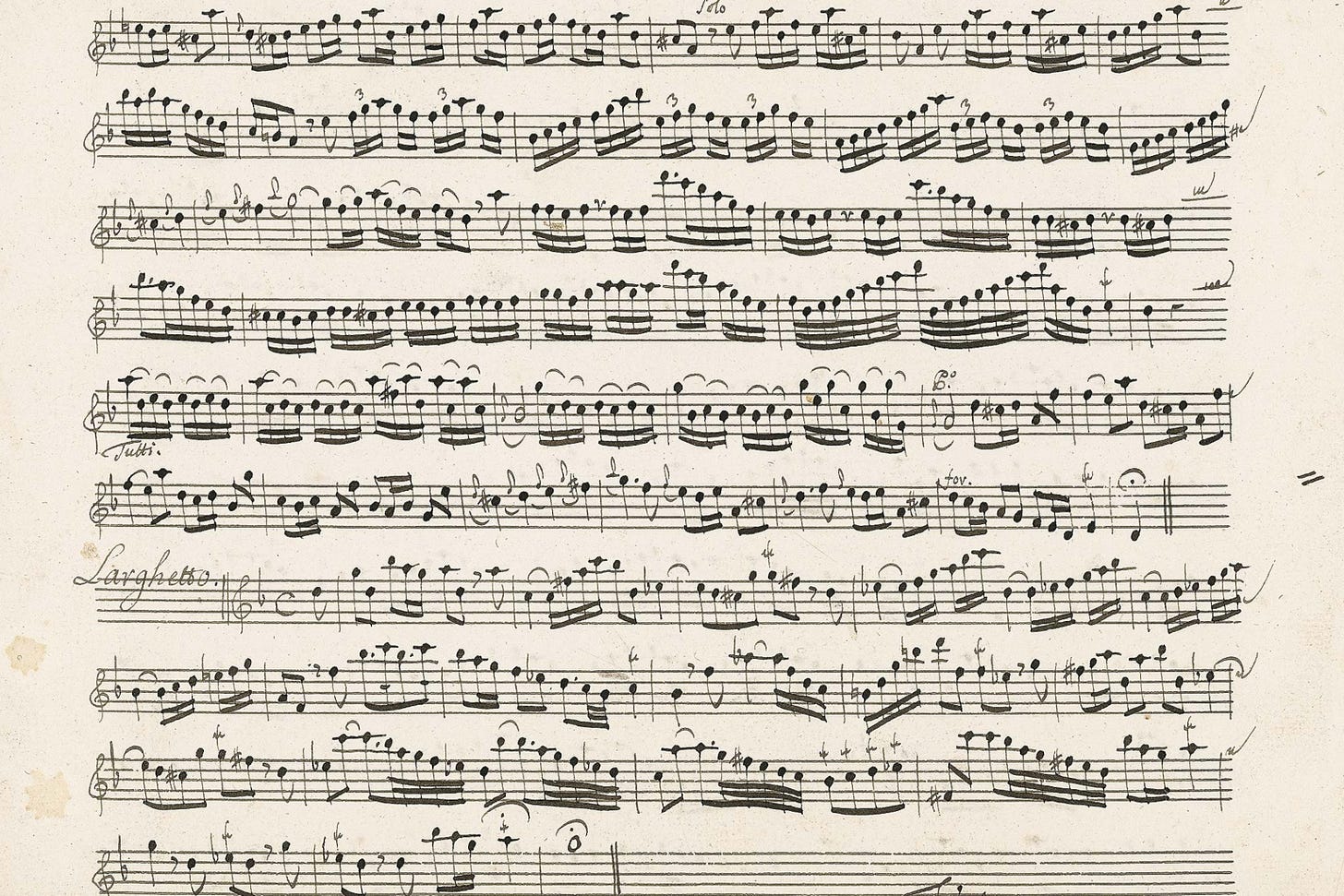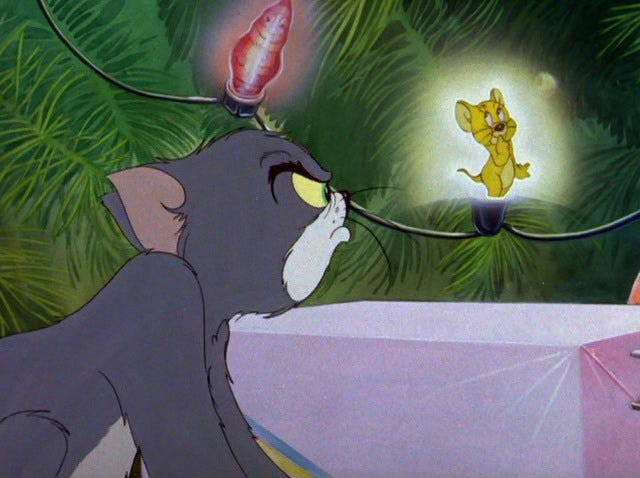The holiday season is here! There are so many festive and non-festive, equally fun film screenings and events happening this month.
Let’s get into it:
December Book Selections
First things first, ICYMI: I pulled together a guide for anyone looking to gift books for the holidays.
Now, reading recommendations for the month ahead include:
The Age of Innocence by Edith Wharton (1920) — December is the perfect time to dive into older classics! The Age of Innocence, one of my favorite novels, inhabits the Gilded Age New York of author Edith Wharton’s childhood, a time before the Commissioners’ Plan of 1811, when the uppermost tier of Manhattan social life concentrated around Washington Square Park. A compelling exploration of class dynamics and romantic relationships, the narrative zeroes in on the impending marriage of Newland Archer and May Welland, a match catapulted into peril when May’s cousin, Countess Ellen Olenska, returns from Europe.
In her review for The New Yorker, author and cultural critic Hillary Kelly rightly identifies this novel of manners as one about surveillance. She writes: “We have perhaps a surfeit of one-per-cent-focussed entertainment, with Succession, Billions, The Undoing, and The Crown…The Age of Innocence is the direct ancestor of this type of entertainment, but, in contrast with most shows that employ “wealth consultants,” here the author is the expert. From its first scene, the novel is conditioning its readers in how to watch and judge. All the main players are in their opera boxes, observing one another instead of the production of Faust. Newland Archer enters the club box at the old Academy of Music, and trains his eye on his fiancée, May Welland. Next to him, Lawrence Lefferts, ‘the foremost authority on ‘form’ in New York,’ swivels his opera glass toward the same box and catches a glimpse of Ellen Olenska, the woman who will poach Newland’s heart. He hands the glasses to Sillerton Jackson, society’s authority on lineage and rank, who takes in the Countess Olenska — freshly returned home to the United States, after a disastrous, abusive marriage in Europe — and proclaims his amazement that she would dare to show her face in public. We’re watching the characters watch one another.”
The Bluest Eye by Toni Morrison (1970) — Divided into four sections, one dedicated to each season, The Bluest Eye (1970) traces a year in the life of Pecola Breedlove, a young Black girl mocked for her dark skin, curly hair, and brown eyes. She yearns for looks synonymous with Western beauty standards, the kind that shape the then-ubiquitous Dick and Jane books (which Toni Morrison parodies in the novel’s opening pages, then uses to title its chapters). A foster child, Pecola lives with nine-year-old Claudia MacTeer and her family. Told primarily from Claudia’s first-person perspective, the novel not only occurs in the present tense of 1941, but also dips backward in time to explore the young lives of Pecola’s parents, Cholly and Pauline.
Like The Age of Innocence, The Bluest Eye operates as a novel about observation, both visual and auditory. In a piece for The New Yorker, Hilton Als writes: “In this short, intellectually expansive, emotionally questioning, and spiritually knowing book, the act of looking — and seeing — is described again and again…The accuracy of Morrison’s dialogue can render you a child again, eavesdropping on those thrilling ladies, whose talk feels like a delicious tease, a promise of warmth and attention…Her [Pecola’s] upstairs neighbors are another aspect of her hope. She loves to listen to these women’s stories because, despite the demands of their work, they are free: free to love whomever and spend their money however they like. Later in the conversation, Morrison reveals what the prostitutes keep from Pecola: how life can break you down.”
Housekeeping by Marilynne Robinson (1980) — As author Madelaine Lucas describes for LitHub, Housekeeping (1980), Marilynne Robinson’s debut novel, “is the story of two sisters, Ruth and Lucille, who are raised by a rotating cast of eccentric female family members after their mother drives a borrowed Ford off a cliff and into the lake that dominates the fictional town of Fingerbone. Abandoned on the porch of their grandmother’s home, the girls left in her care until she is replaced in the house by two great-aunts, and then eventually, by their mother’s itinerant sister Sylvie.” The book animates the Idaho of Robinson’s childhood, cultivating a chilly exploration of the American West through Ruth’s first-person lens (“My grandmother always boasted that the floods never reached our house, but that spring, water poured over the thresholds and covered the floor to the depth of four inches, obliging us to wear boots while we did the cooking and washing up. We lived on the second floor for a number of days.”).
Very Cold People by Sarah Manguso (2022) — This novel from Liars (2024) author Sarah Manguso portrays girlhood at its most perilous, inhabiting a frozen town that makes for a perfect December read.
In the July Book Review, I write: “Very Cold People (2022) enlivens Waitsfield, Massachusetts from the first-person perspective of Ruthie, a Jewish Italian girlie trying to make sense of the…town that raised her (“My own girlhood felt like something from 1650 even when it was happening. The little parties, kindnesses done by friends, the light as I walked home from school. Pine needles. I spent those days feeling half-there, not quite committed to that life.”). Told in brief vignettes by an adult Ruthie, this rhythmic read looks back on the web of friendships, of local myths, of family scars that came to comprise her childhood. Manguso implements a kaleidoscopic lens at points, hindsight afforded by Ruthie’s age that slowly reveals the dismal fates of her peers. Abuse bubbles beneath Manguso’s nostalgic, pared-back prose, becoming overt only toward the novel’s end.”
As critic Johanna Thomas-Corr puts it in her review for The Guardian, “any act of generosity feels too good to be true…It unfolds like a much darker version of Roald Dahl’s Matilda — only told at a glacial speed, with no Miss Honey coming to the rescue.”
Less Than Zero by Bret Easton Ellis (1985) — Less Than Zero (1985) is a Christmas book, change my mind !!
Bret Easton Ellis’s debut novel adopts the first-person, present-tense perspective of Clay, an LA teenager returning home for the holiday break. His first semester at New Hampshire’s fictional Camden College, an avatar for Bret’s alma mater of Bennington, has come to a close. Moments after Clay’s plane hits the tarmac, West Coast culture closes in on him. He narrates: “People are afraid to merge on freeways in Los Angeles. This is the first thing I hear when I come back to the city. Blair picks me up from LAX and mutters this under her breath as her car drives up the onramp. She says, ‘People are afraid to merge on freeways in Los Angeles.’ Though that sentence shouldn’t bother me, it stays in my mind for an uncomfortably long time. Nothing else seems to matter.” Over the course of the book, Clay drifts from party to party in a cloud of disillusionment; as author Ottessa Moshfegh writes in her 2019 meditation on the novel,” the emotional valence of Clay’s delivery is stark, a voice floating along with the smog and cigarette smoke.”
Bret published Less Than Zero at age 21, while still a student at Bennington. He began working on it as a high schooler at Buckley, obsessively reading and re-reading the work of Joan Didion, a disciple of Ernest Hemingway, to learn her style. Bret’s tailored focus results in sparse prose shaped by Didion, by Hemingway — but applied to coked out LA teenagers instead of Haight Ashbury hippies or alcoholic expats. Moshfegh observes: “TaB was introduced in 1963 as Coca-Cola’s first diet drink. It used zero-calorie saccharin instead of sugar, an innovation that was intended to inspire people to indulge in carbonated sweetness without worrying about packing on the pounds…TaB’s nothingness seems central to the meaningless luxuries and woes of the 80s youth generation: immunity and ineffectuality are the highest privileges of the young, beautiful and rich. Less Than Zero harnesses that ineffectuality with minimalism, compressing ennui into dread, and then into horror. Thus, it succeeds in making something out of nothing.”
Upcoming Content to Consume
BAM: An Evening with Daniel Craig (Date: 12.3) — Daniel Craig in conversation with Hilton Als! The pair will kick off the month at BAM discussing Craig’s role in Luca Guadagnino’s Queer (2024), a new film adaptation the William Burroughs novella from 1985, as well as the varying manifestations of masculinity Craig has embodied over the course of his career.
The event will occur at 7:30 PM on 12.3. You can book tickets here!
Village East’s Three Weeks of Christmas Series (Timing: 12.4-12.18) — This year, Village East’s annual holiday series will include screenings of It’s A Wonderful Life (1946), Elf (2003), and Love Actually (2003). I’m personally always here for Hugh Grant in 4K (more on that in a minute). You can check showtimes and book tickets here!
Film Forum: The Umbrellas of Cherbourg (1964) (Dates: 12.6-12.12) — This French New Wave cult classic I’ve never seen, a musical drama clocking 90 minutes (my ideal movie length), comes to Film Forum for one week this month! From filmmaker Jacques Demy and starring Catherine Deneuve, The Umbrellas of Cherbourg (1964) “took the top prize and Best Actress award at Cannes; garnered five Oscar nominations; and in its overwhelming romanticism, capped by a snow-blanketed Christmas climax at an Esso station, reduced packed houses around the world to bittersweet tears,” per Film Forum. Sold!
IFC Center: It’s A Wonderful Life (1946) (Opening Date: 12.6) — For those of you unfamiliar, It’s A Wonderful Life (1946) traces the life of George Bailey (played by Jimmy Stewart), the string of sacrifices that lead to a moment of suicidal contemplation. Faced with death, George has the opportunity to see a version of the world without his impact, gaining perspective on how his seemingly minute existence influences the people around him.
Multiple theaters tend to screen this holiday classic in December, but its annual run at IFC Center always remains my favorite because Donna Reed’s daughter, Mary Owen, introduces a handful of the screenings. You can view this year’s schedule here!
The Paris Theater: It Happened One Night (1934) (Dates: 12.7-12.12) — Clark Gable and Claudette Colbert star in this pre-Code screwball rom-com from Frank Capra, which took home all five major Academy Awards — Best Picture, Best Director, Best Actor, Best Actress, and Best Adapted Screenplay — following its February 1934 premiere.
Per The Paris Theater, It Happened One Night (1934) zeroes in on Ellie Andrews (Colbert), a spoiled heiress looking to escape “her millionaire father (Walter Connolly), who wants to stop her from marrying a worthless playboy. En route to New York, Ellie gets involved with an out-of-work newsman, Peter Warne (Gable). When their bus breaks down, the bickering couple set off on a madcap hitchhiking expedition. Peter hopes to parlay the inside story of their misadventures into a job. But complications fly when the runaway heiress and brash reporter fall in love.”
The Paris Theater: The Philadelphia Story (1940) (Date: 12.8) — Screening as part of The Paris Theater’s ongoing New York Film Critics Circle series, The Philadelphia Story (1940) will play on 35mm at 12:00 PM on 12.8 with an introduction from Esther Zuckerman, author of Falling in Love at the Movies: Rom-Coms from the Screwball Era to Today (2024).
For those of you unfamiliar with this early days Kate Hepburn rom-com, per Criterion: “The intoxicating screenplay by Donald Ogden Stewart pits the formidable Philadelphia socialite Tracy Lord (Hepburn, at her most luminous) against various romantic foils, chief among them her charismatic ex-husband (Cary Grant), who disrupts her imminent marriage by paying her family estate a visit, accompanied by a tabloid reporter on assignment to cover the wedding of the year (James Stewart, in his only Academy Award–winning performance). A fast-talking screwball comedy as well as a tale of regret and reconciliation, this convergence of golden-age talent is one of the greatest American films of all time.”
Albertine: Living Beautifully in Paris: A Conversation with Mathilde Favier and Clémence von Mueffling (Date: 12.9) — A celebration of Parisian culture to kick off your holiday season! Per the French Upper East Side bookshop and reading room: “Join Mathilde Favier, PR director of Dior Couture, and Clémence von Mueffling, Beauty and Well Being CEO, as they discuss Favier’s latest book, Living Beautifully in Paris (2024). Both born and raised in Paris…they’ll address the importance of cultivating French savoir vivre in your own life and how to share it with friends and family…especially essential in today’s fast-paced, always-connected world.”
Scheduled for 6:00 PM on 12.9, this free event will occur in English! You can RSVP here.
The Paris Theater: Metropolitan (1990) (Date: 12.11) — I am simply devastated that I’m busy the night of this event. At 7:00 PM on 12.11, The Paris Theater and Filmmaker Magazine will hold a special screening of Metropolitan (1990), including a Q&A with filmmaker Whit Stillman and actor Chris Eigeman (of Stillman’s Doomed Bourgeois in Love trilogy, which I reviewed last September and October, and famously Gilmore Girls season four).
Gossip Girl (Whit Stillman’s Version), Metropolitan offers “an ironically comic look at Manhattan’s endangered debutante scene…chronicl[ing] the rise and ultimate decline of a group of young Park Avenue socialites who gather nightly to discuss love, honor, and the impending demise of their class.” The film takes place in the week after Christmas, making it an ideal holiday watch.
The screening also kicks off a new monthly collaboration between The Paris and Filmmaker Magazine, so stay tuned for future events in this vein.
Film at Lincoln Center’s Robert Siodmak: Dark Visionary Series (Dates: 12.11-12.19) — An ode to a film noir legend!
Per Film at Lincoln Center: “Of all the great filmmakers who fled Europe amid the ascent of the Nazis in Germany and turned up in Hollywood, few did more to shape our sense of film genre than Robert Siodmak. Born to German Jewish parents at the dawn of the 20th century, Siodmak spent decades honing his chameleonic sensibility and influential style across a variety of studios and national cinemas. Perhaps his most vital contributions came within the domain of film noir — such richly atmospheric and sophisticatedly hard-edged works as The Killers (1946), Criss Cross (1949), Phantom Lady (1944), and The Suspect (1942) — but each film that Siodmak directed, no matter the genre and no matter whether in Germany, France nor Hollywood, powerfully bears his imprint. Join Film at Lincoln Center for a retrospective dedicated to one of Hollywood’s most enduringly influential yet too-little-celebrated helmers, featuring an assortment of new 4K digital restorations of his signature films.”
I have personally only seen The Killers (1946) and am looking forward to hopefully delving into more of Siodmak’s work this month. You can check out the full line-up and book here!

McNally Jackson Seaport: On Art with David Zwirner Books: Julie Otsuka and Sarah Roberts on Joan Mitchell: Paintings, 1979–1985 (2024) (Date: 12.12) — Abstract expressionist Joan Mitchell has remained one of my favorite artists since 2017, when I saw Mitchell / Riopelle: Un Couple Dans La Démesure at Musée national des beaux-arts du Québec in Quebec City. The exhibition focused on Mitchell’s 25-year romantic relationship and creative partnership with Canadian artist Jean-Paul Riopelle, which culminated in the creation of La Vie En Rose (1979), a quadriptych marking its end that I later saw on display at The Met. Her work has gone on to find me at art fairs, galleries, and museums ranging from Salon Art + Design to David Zwirner to SFMOMA, always when I need it most.

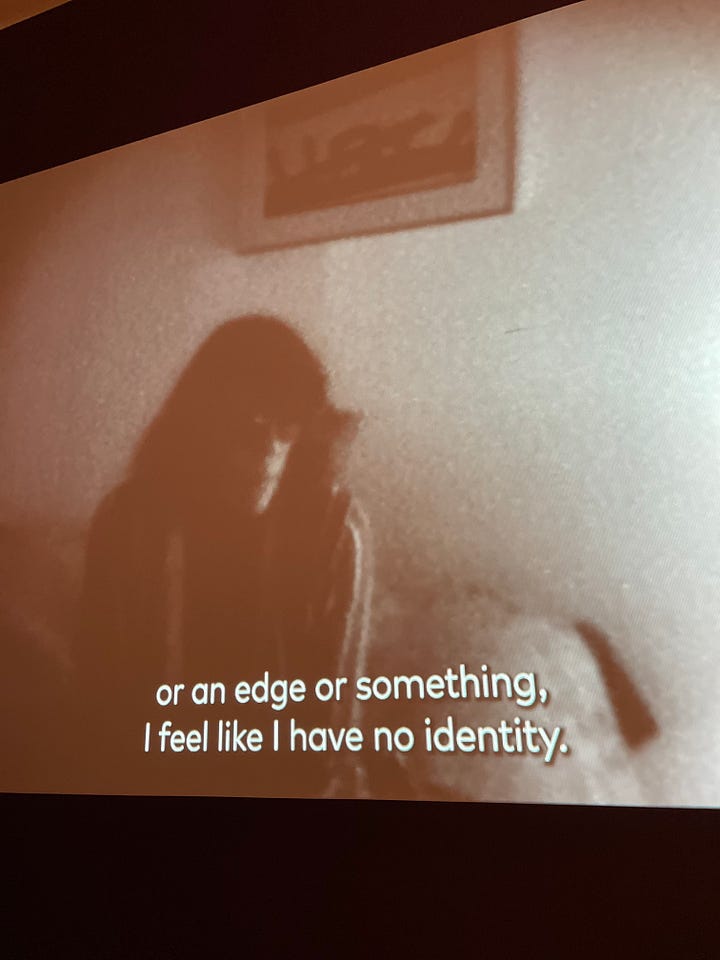
Per SFMOMA: “Fearless in her experimentation, Joan Mitchell (1925-1992) painted what she wanted to paint. Her abstract canvases grew from recollections of fields and gardens, people she loved and fought with, favorite poems, music, flowers, and even her beloved dogs. In a career that spanned nearly five decades, the Chicago-born artist distilled feelings and memories into her vast canvases without bowing to prevailing schools or styles. She created compositions of unparalleled beauty, strength, and emotional intensity, pushing abstract painting into uncharted territory that she defined.”
At 6:30 PM on 12.12, David Zwirner Books and McNally Jackson will celebrate the launch of Joan Mitchell: Paintings, 1979–1985 (2024) with a conversation between its author, Julie Otsuka, and the Joan Mitchell Foundation’s Senior Director of Curatorial Affairs, Sarah Roberts. Roberts curated Mitchell’s 2021 retrospective at SFMOMA, as well as co-authored and co-edited the accompanying exhibition catalogue prior to joining the Foundation. You can buy tickets, with the book if you wish, here!
Film Forum’s Brando 100 Series (Dates: 12.13-12.26) — To mark the centennial of Marlon Brando’s birth, Film Forum will mount a two-week series dedicated to the incredibly sexy screen legend’s body of work.
Russian theatre practitioner Konstantin Stanislavski and American acting teacher Stella Adler had an outsized influence on Brando’s artistic approach. Where Stanislavski coined the notion of Method acting, Adler implemented it in training the likes of Steve McQueen, Robert De Niro, Elaine Stritch, Peter Bogdanovich, Warren Beatty, and, of course, Brando. The result? Brando doing things like putting cue cards around the set of The Godfather (1972) “for reasons of naturalism,” per Slash Films, instead of simply learning his lines. His “different” way of working, as Francis Ford Coppola describes it, ultimately yielded stunning performances spanning six decades, shaping the face of film from the Golden Age of Hollywood to New Hollywood and beyond.
Film Forum’s line-up includes A Streetcar Named Desire (1951), On the Waterfront (1954), The Godfather (1972), Apocalypse Now (1979), and more. You can check showtimes and book tickets here!
The Center for Fiction: Biblio Bacchanal: New York City in a Cocktail (Date: 12.14) — A fun event to cap off the year at The Center for Fiction! At 5:00 PM on 12.14, author Amanda Schuster will discuss her recent book, Signature Cocktails (2023), alongside New York Times reporter, American Rye (2022) author, and whiskey expert Clay Risen.
Per The Center for Fiction: “Signature Cocktails intertwines rich history, engaging anecdotes, detailed backstories, and enticing photos to create a comprehensive collection of 200 cocktail recipes. Beautifully crafted and useful for even the most seasoned mixologist, Schuster’s book provides insight into almost 600 years of cocktail history.”
A selection of four cocktails curated by Schuster will accompany the conversation, and she will sign books after the event. You can learn more and book tickets here!
The Holidays at Metrograph: 2024 (Dates: 12.20-12.22) — Metrograph has announced its 2024 holiday film line-up, which includes Phantom Thread (2017), The Muppet Christmas Carol (1992), An Affair to Remember (1957), Little Women (2019), Edward Scissorhands (1990), and 2046 (2004). You can check showtimes and book tickets here!
Village East: Meet Me in St. Louis (1944) (Date: 12.23) — An extremely underrated holiday classic IMO! This Little Women-coded musical drama focuses on four sisters in the lead-up to the 1904 St. Louis World’s Fair. Judy Garland stars, and the film features the original rendition of “Have Yourself a Merry Little Christmas.” You can catch it at 4:15 PM or 7:00 PM on 12.23!
New Beverly Cinema: Die Hard (1988) (Dates: 12.23-12.24) — Annual Christmas Eve screening of Die Hard (1988) at The New Bev 🤌🏼
Vista Theater Hollywood: Shampoo (1975) (Dates: 12.28-12.29) — Another one for the LA subscribers! The Vista will screen this 70s classic, a storied favorite of my girl Pauline Kael toward the top of my to-watch list, as part of its matinee series over the final weekend of the year.
Starring Warren Beatty, Julie Christie, and Goldie Hawn, Shampoo (1975) explores the sexual entanglements of an LA hairdresser (played by Beatty) on the eve of the 1968 US election. Per Criterion: “Beatty’s George didn’t go to beauty school just because he wanted to style women’s hair — although that has become his passion — but because he wanted sexual access to all the pretty women who come to beauty salons. His plan worked. In this film, George juggles his free time among his girlfriend Jill (Goldie Hawn), former girlfriend Jackie (Julie Christie), lover Felicia (Lee Grant), and Felicia’s daughter, Lorna (Carrier Fisher). ‘Beatty,’ marveled New York Times critic Vincent Canby, ‘can make outrageous self-interest plausibly funny in a way that escapes many professional comedians.’”
Village East: When Harry Met Sally (1989) (Date: 12.30) — See the ultimate New Year’s Eve movie on the big screen at Village East! For those of you unfamiliar, the Nora Ephron classic, playing at 7:00 PM on 12.30, asks the age-old question: Girls and gays aside, can men and women really be friends? Billy Crystal and Meg Ryan star as Harry Burns and Sally Albright, a pair of acquaintances-turned-friends whose lives converge and diverge over a 12-year period, with the narrative coalescing to a crescendo in the final hour of 1988.
Miscellaneous Musings
Patrick Fealey’s Account of Homelessness in America — If you only read one thing from this month’s newsletter, make it this piece. In it, writer Patrick Fealey sheds light on his journey with homelessness across the southern Rhode Island of his childhood, accompanied by his dog, Lily (“She is my first dog…Lily was found tied to a fence in the August Texas heat, skeletal, with mange, flies buzzing her. Since then, she has gained twenty-eight pounds and become a most engaging, agile, and sensitive creature.”).
For context, between 1991 and 1997, Fealey wrote literary fiction while working as a reporter and art critic for The Boston Globe, The Narragansett Times, and Reuters. He got named Best Investigative Reporter by multiple press associations, voted Best Art Critic twice, and, in 1996, won The Spirit of Rhode Island Award. In 1997, Fealey became disabled by manic depression and had to stop working in journalism. Rather than cease writing altogether, he shifted his focus toward literary fiction.
Per a GoFundMe created by a Rhode Island family after the Esquire piece’s publication, Fealey “has roamed the country, 20 residences in 18 cities coast to coast, and banged out 15 literary works. He has not made an effort to sell books, but novel excerpts and short stories of his have been published internationally, from New York to Bombay….[his] work is catalogued at Yale University and, in 2017, literary scouts for the Frankfurt Book Fair, the largest annual gathering of publishing professionals, ranked the serialized edition of…[his] novella Bird's Island as one of the ten best of the year in the world after reading and reviewing 6,000 magazines.”
People tend to collect accolades, credentials, as a kind of insulation. In the Esquire piece, Fealey underscores how his plight has the potential to happen to anyone — the awarded, the college educated. Anyone without a financial safety net. He observes: “Most Americans live paycheck to paycheck, and many have no emergency savings — they are one crisis from homelessness. A job loss or an unexpected illness and they are where I am. They are on the edge, driving bigger and faster and louder cars — a society speeding along as it disintegrates.” During a confrontation with a police officer, Fealey reflects: “I look at the cop with the shaved head…How do people get this far apart? We are arguably of the same class and live in the same town. He has no idea my empathy is with him.”
Throughout the article, Fealey reflects on the privilege his background does and does not afford. When confronted by cops for sleeping in his car, a repeated occurrence, his credentials as a writer, as a former reporter, stave them off — but only temporarily. No matter where Fealey relocates, even to parking lots the police suggest, an officer finds him. He writes: “I park where they instructed. They know I’m here and see me in the same spot every day and night. Chief Gingerella knows who I am, that I have no criminal record, am a professional and productively engaged, am not a threat and keep to myself…They know which car is mine and come, and come, and come, systematically robbing me of peace and a sense of well-being.”
His firsthand account, one with a level of literary quality surpassing many of today’s bestselling authors, reveals the paltry infrastructures the United States has in place to support the disabled and homeless, showing systemic failures through the lens of poignant personal experience.
That Cormac McCarthy Vanity Fair Article — I’ll borrow from my IRL bestie Rebecca on this one. As she writes in her newsletter, Thinking About Getting Into: “The article everyone is hate-reading is this one in Vanity Fair about the late author Cormac McCarthy and a teenager he groomed. From the few clips I’ve read on Bluesky…it seems poorly written and annoying. So I will not be reading it. Stay safe.”
Hugh Grant’s Heretic (2024) Press Tour — As a longtime Hugh Grant stan who rooted for Daniel Cleaver in Bridget Jones’s Diary (2001) at age 13 (???), I’m naturally eating up his Heretic (2024) press tour. My personal favorite tidbit? Hugh’s viral responses to the Proust Questionnaire for Vanity Fair:
What is the trait you most deplore in others? Telling me the menu is only accessible through the QR code.
What is your greatest fear? The cat bowls. With the old cat food dried on like cement.
Which living person do you most despise? Anyone in private equity. Or tech. Or London traffic planning. Or who uses a leaf blower.
He’s so me. Plus, five stars for my personal favorite response:
What is your idea of perfect happiness? Drinking a pint of London Pride while munching Twiglets and reading about Colin Firth having a critical and box office catastrophe.
Classic FM 🫶🏼 — I’m newly and unironically addicted to British radio station Classic FM. With a tagline of “the most relaxing music,” it streams 24/7 via Global Player and has become my new go-to background music for reading and just about everything else. The station just started mixing in some holiday classics too.
You can download the app or play it online here!
Supplemental Reading
As always, don’t forget to use archive.ph if you can’t access these pieces or any of the ones throughout my Substack!
McSweeney’s: Famous Authors Lose Their Moms in Department Stores
The Dial: The Promise of Duolingo
Air Mail: Down and Dirty On the Waterfront: How the Classic Film…Pitted Director Elia Kazan against Star Marlon Brando
From the Desk of Marlowe Granados: An Ode to Hugh Grant
The Guardian: Francis Bacon: Human Presence review – ‘This whirligig of horrors is the best Bacon show I’ve ever seen’
Social Media Round-Up
A new section aggregating tweets, TikToks, Notes, etc. that made me laugh in the past month:
Cocktail of the Month
Ring in the holiday season by preparing a traditional Christmastime cocktail that dates back to the 1820s with the…
No, not the cat and mouse pictured above (well, not exactly — more on that in a minute). This drink draws its name from British boxer and writer Pierce Egan’s book Life in London, or The Day and Night Scenes of Jerry Hawthorn Esq. and his Elegant Friend Corinthian Tom (1821). For publicity’s sake, Egan introduced his own spin on eggnog and titled it after his novel. The book — and the drink — went on to influence culture on both sides of the Atlantic, becoming a favorite of U.S. President Warren G. Harding and lending its name to the household favorite cartoon series that dominated screens from the 1940s through the 1960s.
To make the drink, you’ll need to prepare the batter first, which you can store in the fridge to serve up cocktails throughout the holiday season. Separate three egg whites and yolks into two bowls, setting both aside. (You should use a bigger bowl for the egg whites.) Then, in the egg white bowl, whip in a quarter teaspoon for cream of tartar until stiff peaks form. In the egg yolk bowl, beat in one cup of sugar, a half ounce of dark rum, and a quarter teaspoon of vanilla extract until completely combined. Now, fold the egg yolk mixture into the egg white mixture. Seal and store in the refrigerator.
When the time comes to make a drink, heat the coffee mug of your choice by rinsing it with boiling water. Then, add one ounce each of dark rum and cognac, along with one tablespoon of the pre-prepared batter, into the mug and top it with hot milk. The recipe calls for whole milk, but you can play around with substituting in alternatives if you wish. Then, garnish with ground nutmeg, cloves, and allspice, and enjoy!
That’s all for now! Stay tuned for a Patricia Highsmith-focused November Book Review with a dash of Jay McInerney.
xo,
Najet


